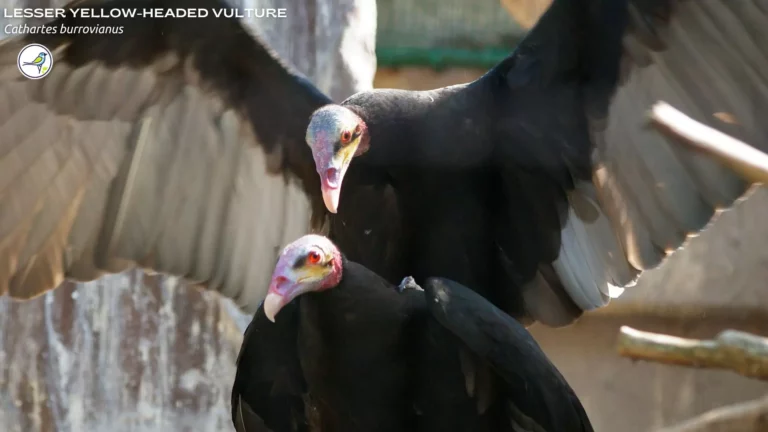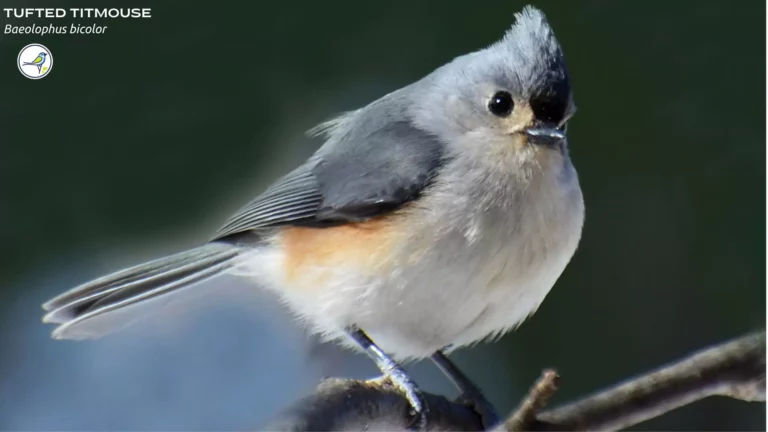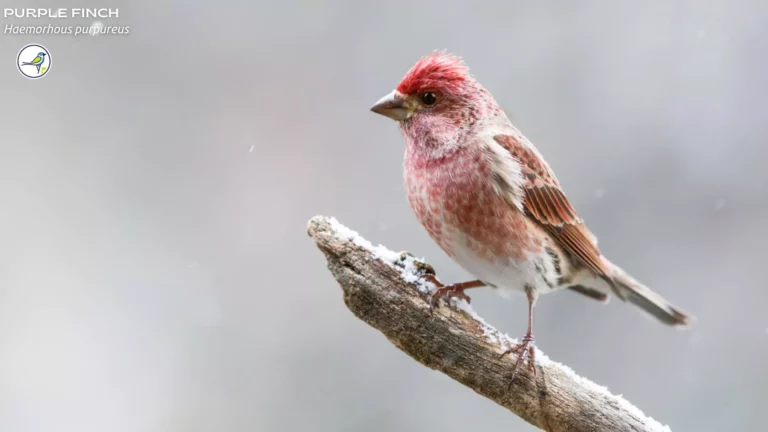What Bird is the First Sign of Spring?
As winter’s icy grip finally begins to loosen, nature awakens from its frosty slumber, and the signs of spring start to emerge. Among these signs, none are as enchanting and evocative as the cheerful chorus of birdsong that fills the air. Birdwatchers and nature enthusiasts eagerly anticipate this annual symphony, as it marks the beginning of a new season filled with life, color, and renewal.
The first sign of spring is often heralded by the joyful twittering and melodious calls of our feathered friends. In this article, we will explore the avian ambassadors that announce the arrival of spring, transforming the world into a cacophony of chirps and songs. From the familiar American Robin to the vibrant Northern Cardinal, these birds play a pivotal role in our connection to nature and our understanding of the changing seasons.
Join us on this avian adventure as we delve into the world of springtime birdsong and discover why these winged creatures hold such a special place in our hearts during this time of year. Whether you’re a seasoned birder or just someone who enjoys the simple pleasure of listening to birds in your backyard, you’ll find plenty of insights and inspiration in this exploration of the first signs of spring.
So, grab your binoculars and prepare to be serenaded by the enchanting melodies of spring’s early risers. Let’s embark on a journey to identify and appreciate the avian pioneers who make the world burst into life with their songs and vibrant plumage.
Join us as we unravel the delightful mystery of the first bird signifying the arrival of spring and rediscover the beauty of this timeless seasonal transition. Birdwatching enthusiasts and curious nature lovers alike will find this guide to be an inspiring companion on their journey to welcome the rebirth of spring through birdsong.
The Robins Return – Spring’s Iconic Ambassador
When it comes to welcoming spring, few birds capture the essence of the season as perfectly as the American Robin (Turdus migratorius). Renowned for its vivid orange-red breast and cheerful demeanor, this avian symbol of renewal is synonymous with the changing seasons in North America.

1. Why American Robins Are Springtime Pioneers: As winter’s frost begins to thaw, American Robins embark on an extraordinary journey, leaving their southern wintering grounds in the United States and Mexico to return to their northern breeding territories. This migratory feat, spanning thousands of miles, showcases their resilience and adaptability.
2. Joyful Choruses: For birdwatchers and nature enthusiasts, the return of American Robins to their northern breeding grounds is a highly anticipated event. In many regions, they are among the first to arrive, signaling the impending arrival of warmer days. What truly sets American Robins apart as springtime heralds is their melodious song. Their “cheerily, cheer-up” call resonates through the crisp spring air, a joyful chorus that lifts spirits and confirms winter’s retreat. It’s a sound that’s as familiar as it is cherished, a serenade that rekindles our connection to nature.
3. Ecological Significance: Beyond their symbolism, American Robins play a vital ecological role. Their foraging activities help control insect populations, acting as natural pest control. During spring, they primarily feed on earthworms, insects, and fruits, contributing to the delicate balance of local ecosystems.
4. Spotting and Attracting American Robins: To catch a glimpse of these springtime pioneers, you need not venture far. They can often be found in your yard, local parks, or wooded areas, foraging for earthworms in freshly thawed soil or perching in trees, scouting for potential nesting sites. If you wish to welcome American Robins to your garden, consider planting berry-producing shrubs such as holly and providing a birdbath for them to drink and bathe. These small gestures can transform your outdoor space into a haven for these beautiful birds.
Chirping Cardinals – A Splash of Color in Early Spring
As winter’s grip loosens, a vibrant burst of color and song greets early spring, and at the forefront of this spectacle is the Northern Cardinal (Cardinalis cardinalis). This striking bird, with its brilliant crimson plumage, is a year-round resident in many regions, but it truly comes alive with increased activity and vocalization as the seasons change.

1. The Northern Cardinal’s Year-Round Presence: One of the cardinal’s charms is its year-round presence. While other birds may migrate, these striking birds remain steadfast, offering glimpses of their vibrant red feathers against winter’s muted backdrop. However, it’s in spring that they truly steal the show.
2. Increased Activity and Vocalization in Spring: With the arrival of spring, Northern Cardinals become more active, foraging for seeds, insects, and berries. The males, in particular, ramp up their singing to establish territory and attract mates. Their distinctive “cardinal, cardinal” call fills the air, a musical declaration that heralds the changing season.
3. Attracting Cardinals to Your Yard: If you wish to encourage these beautiful birds to visit your yard, consider providing a cardinal-friendly environment. Offering sunflower seeds, safflower seeds, and a well-placed bird feeder can make your outdoor space more enticing. Cardinals are known to be regular visitors to well-stocked feeders. In addition to food, water is essential. Providing a birdbath is not only an excellent way to attract cardinals but also ensures they have a water source for drinking and bathing.
Melodious Song Sparrows – Welcome Harbingers of Spring
As winter’s grip begins to loosen, and the first hints of spring emerge, one bird’s melodic song rings out as a welcome harbinger of the changing seasons: the Song Sparrow (Melospiza melodia). These small, unassuming birds play a significant role in announcing the arrival of spring.

1. Introduction to Song Sparrows as Common Springtime Singers: Song Sparrows are one of the most widespread and familiar sparrows across North America. Their distinctive song, a complex melody of trills and warbles, is synonymous with the changing of the seasons. It’s a tune that resonates with birdwatchers and casual observers alike.
2. Describing the Song Sparrow’s Distinctive Melody: Identifying Song Sparrows is often as simple as listening for their song. Their repertoire includes a variety of notes, making it an intricate and melodious melody that sets them apart. Each Song Sparrow’s song may have subtle variations, adding to the richness of their springtime chorus.
3. Habitats and Behaviors of These Cheerful Birds: Song Sparrows are versatile when it comes to their choice of habitats. You can find them in a range of environments, from grassy fields and wetlands to suburban gardens. Their adaptability and willingness to coexist with humans make them accessible to bird enthusiasts everywhere. In addition to their musical talents, Song Sparrows are known for their distinctive appearance, featuring streaked brown plumage and a conspicuous dark spot on their chest. Their cheerful presence is a reminder that spring is a time of renewal, where life returns in full force.
4. Attracting and Spotting Song Sparrows: To attract Song Sparrows to your garden, provide cover in the form of shrubs and brushy areas. These birds appreciate spots where they can forage for seeds and insects while feeling safe from predators. As you step outside in early spring, keep your ears tuned to the sweet songs of Song Sparrows. Their music is not just a soundtrack to the season but a reminder that nature’s symphony is about to reach its crescendo.
Cheerful Chickadees – Tiny Harbingers of Warmer Days
When winter’s icy grip begins to relent, and the promise of warmer days looms on the horizon, one bird’s cheerful presence stands out: the Chickadee. These diminutive yet spirited creatures, known for their distinctive “chick-a-dee-dee-dee” call, play a significant role in announcing the arrival of spring.

1. Chickadees’ Contribution to Spring’s Morning Cheer: Chickadees are among the first birds to become noticeably active as spring approaches. With their bold black caps and striking white cheeks, they’re easily recognizable even to the casual observer. However, it’s their spirited demeanor and unmistakable vocalizations that truly set them apart.
2. Identifying the Signature “Chick-a-dee-dee-dee” Call: The Chickadee’s “chick-a-dee-dee-dee” call is a melodic and repetitive song that’s both endearing and unmistakable. This vocalization serves not only to communicate with fellow Chickadees but also to alert other birds to the presence of potential predators.
3. Preferred Foods, Feeders, and Attracting Them to Your Yard: Chickadees are primarily insectivorous but also feed on seeds, berries, and suet. To attract these charming birds to your yard, consider setting up bird feeders with a variety of seeds and providing a suet feeder during the colder months. They’re frequent visitors to such setups, and watching them can be a delightful pastime. Their affable nature often allows birdwatchers to observe them from relatively close quarters, making them a favorite among those new to birdwatching.
As winter gives way to spring, keep an ear out for the cheerful calls of Chickadees and a watchful eye for their visits to your bird feeders. Their presence serves as a heartwarming reminder that with the arrival of spring, the world is awakening from its cold slumber, and a chorus of life is about to fill the air.
The Arrival of Warblers – A Colorful Kaleidoscope
As spring unfolds its vibrant tapestry, a dazzling array of colors and melodies graces our surroundings, thanks to the arrival of warblers. These small, neotropical migrants are renowned for their striking plumage and enchanting songs, making them some of the most anticipated guests in the avian world.

1. The Diversity and Vibrant Colors of Spring Warblers: Spring warblers are a diverse group, with each species adorned in a unique palette of colors. From the bright yellows of the Yellow Warbler to the striking black-and-white pattern of the Black-and-white Warbler, they create a visual kaleidoscope amid the budding leaves.
2. Highlighting Different Warbler Species and Their Migrations: While there are numerous warbler species, some are more widespread than others. The Yellow Warbler, for instance, is known for its cheerful presence across North America. Others, like the Blackburnian Warbler, grace specific regions with their vibrant hues during their migratory journey. Warblers are among the many neotropical migrants that journey from Central and South America to North America for the breeding season. Their migration is a testament to their endurance and navigational skills.
3. Tips for Spotting and Identifying These Exquisite Birds: Identifying warblers can be a challenging but rewarding endeavor for birdwatchers. Their distinct colors and patterns, combined with their energetic foraging habits, make them an exciting target for observation. Patience and a good pair of binoculars are your allies when seeking these avian gems. Look for them in deciduous forests, wetlands, and shrubby areas, where they often search for insects and caterpillars. Learning their songs and calls can also be a valuable tool in identifying warblers, as they often vocalize while foraging.
As you venture out in early spring, keep an eye out for the vivid flashes of color and listen for the melodious songs of these tiny migrants. Their presence is a testament to the beauty and diversity of nature, reminding us that spring is a season of transformation and renewal.
Birdwatcher’s Paradise: Top Places to Spot Spring Birds in the US
Spring in the United States brings a magnificent spectacle of avian activity as birds return from their winter migrations or become more active in their breeding territories. Whether you’re a seasoned birder or a nature enthusiast, there are numerous birdwatching hotspots across the country where you can witness the vibrant displays of spring birds. In this guide, we’ll explore some of the top locations to spot these feathered beauties, offering an unforgettable birdwatching experience.
1. Magee Marsh Wildlife Area, Ohio: Magee Marsh is a renowned stopover for migratory birds, especially warblers, during their journey north. The Magee Marsh Bird Trail is a must-visit for birdwatchers seeking a diverse array of spring migrants.
2. Big Bend National Park, Texas: Located along the Rio Grande, Big Bend is a hotspot for bird diversity. Spring is an excellent time to observe resident birds and migratory species, including hummingbirds, tanagers, and buntings.
3. Cape May, New Jersey: Cape May is famous for its spring bird migration, particularly for raptors, shorebirds, and songbirds. Don’t miss the Cape May Bird Observatory and its well-organized birding programs.
4. Everglades National Park, Florida: The diverse habitats of the Everglades provide a haven for numerous bird species year-round. Spring brings the nesting season for wading birds like herons, egrets, and ibises.
5. Malheur National Wildlife Refuge, Oregon: This oasis in the high desert becomes a gathering place for waterfowl, songbirds, and shorebirds during the spring migration. Birdwatchers can explore numerous trails and auto routes in Malheur.
6. Hawk Mountain Sanctuary, Pennsylvania: If raptors are your passion, Hawk Mountain Sanctuary is a prime spot to witness the spring hawk migration. Countless hawks, eagles, and falcons soar through the Appalachian Mountains during this season.
7. Chiricahua Mountains, Arizona: Located in southeastern Arizona, the Chiricahua Mountains are home to a diverse range of birds. Spring brings many hummingbirds, warblers, and other neotropical migrants.
In the symphony of spring, birdwatching offers a harmonious connection to the natural world. Our journey through the top places to spot spring birds in the US has unveiled a chorus of unique destinations, each offering moments of wonder. From the vibrant warblers at Magee Marsh to the majestic raptors at Hawk Mountain Sanctuary, these locations are gateways to avian splendor. Whether you’re a seasoned birder or a novice, these spots promise awe-inspiring encounters. Remember to bring binoculars, a field guide, and a spirit of adventure. But the journey doesn’t end there; consider keeping a birdwatching journal to contribute to citizen science and capture the magic of these encounters. As you immerse yourself in the world of spring birds, let their melodies and colors inspire you. Let birdwatching remind you of nature’s enduring beauty and renewal with each changing season.
Venture to these birdwatching havens, and let sparrows’ songs, cardinals’ calls, and warblers’ plumage serenade your senses. May your spring birdwatching be filled with discovery, appreciation, and a deeper connection to the wonders of the avian world.
Happy birding, and may each sighting be a celebration of the season’s rebirth and the enduring spirit of nature!







